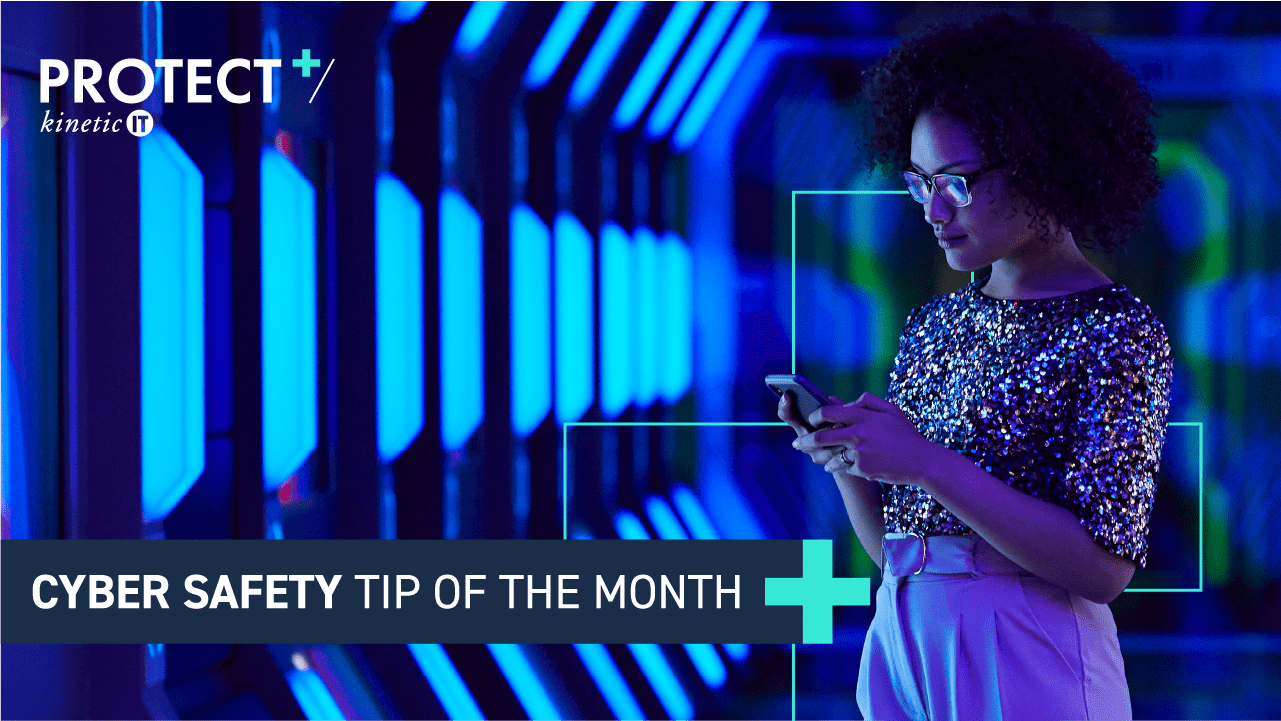If you’re heading to the cloud, strong cloud security is essential. With cyber security attacks becoming more frequent and severe, cloud security solutions must evolve to meet these challenges and safeguard our cloud data.
In our latest Cyber Tip of the Month, PROTECT+ Cyber Consultant Kellsie Chua, delves into the world of cloud computing security, sharing the biggest challenges, plus eight ways to combat these concerns and strengthen your cloud security.

What is cloud computing?
Network-based computing has been around since the 1960s, but the term “cloud computing” was first used in an industry conference on August 9, 2006, by then-CEO of Google, Eric Schmidt. Since then, we have seen a significant increase in the adoption of cloud computing at both consumer and enterprise levels.
Cloud computing is the delivery of different services over the internet. According to Gartner, global end-user spending on public cloud products will increase by 20.7% to $591.8 billion in 2023 from $490.3 billion in 2022. A whopping 92% of organisations are already hosting some of their IT environment in the cloud. There is no doubt that the cloud provides extraordinary benefits in an increasingly data-driven business world. Over the last 10 years, the cloud has evolved from being cutting-edge technology to the foundation of our digital world. The Covid-19 pandemic in 2020 only served to increase cloud migrations as enterprises strived to stay agile and adopt work-from-home strategies.
“Cloud migration is not stopping.”
– Sid Nag, Vice President Analyst at Gartner
Biggest concerns in cloud computing
The main cloud computing challenge for all organisations is security issues. A State of Cloud Security Report in 2021 showed that 79% of companies had experienced at least one cloud data breach within the last 18 months, while 43% reported 10 or more breaches. Cyber threats, hacks, and virus attacks are consistently the biggest problems in cloud computing data security.
RELATED CONTENT: Cyber hygiene: 4 easy tips to keep your data safe
What is cloud security?
Cloud security, or cloud computing security, is a subset of cybersecurity dedicated to protecting cloud-based data, applications, and infrastructure from cyber threats and attacks. Like cybersecurity, cloud security encompasses technology, protocols, and best practices to protect data and applications hosted in the cloud.
How does cloud security work?
Cloud Security is designed to protect storage and network against malicious data theft, deter human error or negligence leading to data leaks, reduce the impact of data or system compromise, and enable data recovery in the event of data loss.
3 types of cloud computing and their security challenges
Public cloud, private cloud, or hybrid cloud? Security concerns and benefits are unique to each of these environments.
1. Public Clouds
Public clouds are hosted by third-party cloud service providers. The provider handles everything.
Security challenges: It is unclear where your data is stored. Since resources are shared, there is a risk of outsiders accessing your data.
2. Private Clouds
Private clouds are usually more secure than public clouds as they are dedicated to a single user or group and rely on their firewall. As these private clouds are isolated, it helps them stay secure from external attacks.
Security challenges: Social engineering and breaches.
3. Hybrid Clouds
Hybrid clouds connect multiple environments, for example, private and public clouds.
Security challenges: Lack of visibility and control, insecure cloud data transmission, and maintaining compliance.
RELATED CONTENT: Common cyber security mistakes and 3 simple ways to fix them

8 cloud security tips to keep your data safe in the cloud
Here are eight security measures you can employ to combat cloud security concerns and reduce your risk.
1. Know your cloud
A road map of where your data and/or apps reside in the cloud environment will help you understand the tools and training required to secure your cloud environment.
2. Understand where your responsibilities lie
Relieve operational burden and optimise capacity to protect what needs your protection.
3. Have a backup plan in place
Know what and how to backup, then test and verify the backup process.
4. Adopt the Zero Trust strategy
Authorise, inspect, and secure everything. Only give access to resources to users who require them.
5. Deploy Multi-Factor Authentication (MFA)
Ensure only authorised personnel can log in to cloud apps and access sensitive data. This is a cheap yet effective security control to prevent hackers from accessing your cloud environment.
RELATED CONTENT: What is the most secure Multi-Factor Authentication method?
6. Use of VPNs
VPNs allow secure access to the cloud as it uses encryption to create a secure connection over unsecured Internet infrastructure.
7. Implement a firewall
Cloud firewalls prevent unauthorised access to online networks regardless of where your data is stored.
8. Cloud Security Awareness
Educate yourself and/or your employees about computer system protection. Stay updated with cyber security news and trends.
Who is responsible for cloud security?
Cloud security is a shared responsibility and a core function of cloud computing is the Shared Responsibility Model. It denotes where a cloud provider’s responsibility ends and where the customers begin.
There are three categories of responsibilities, namely, the provider’s, the customer’s and varied depending on the service model. The service models refer to Infrastructure-as-a-Service (IaaS), Platform-as-a-Service (PaaS), or Software-as-a-Service (SaaS).
Infrastructure-as-a-Service (IaaS): The provider manages all physical infrastructure, for example, Amazon Web Services, Microsoft Azure, and Google.
Platform-as-a-Service (PaaS): Third-party companies manage the IT infrastructure. However, developers have access to a framework wherein they can build customised apps, such as Facebook.
Software-as-a-Service (SaaS): Applications delivered over the internet as a service, such as Netflix, Instagram, and Zoom.
The provider’s responsibilities are related to safeguarding the infrastructure, and patching and configuration of the physical hosts and network. The customer’s responsibilities include managing users and their access privileges, preventing unauthorised access, managing cloud security compliance, and encrypting and protecting cloud-based data assets.
Want to know more about cloud security challenges and solutions? Get in touch with our PROTECT+ team, the experts in cyber security.
You can also read more tips and insights on cloud and cyber security on our PROTECT+ website.















